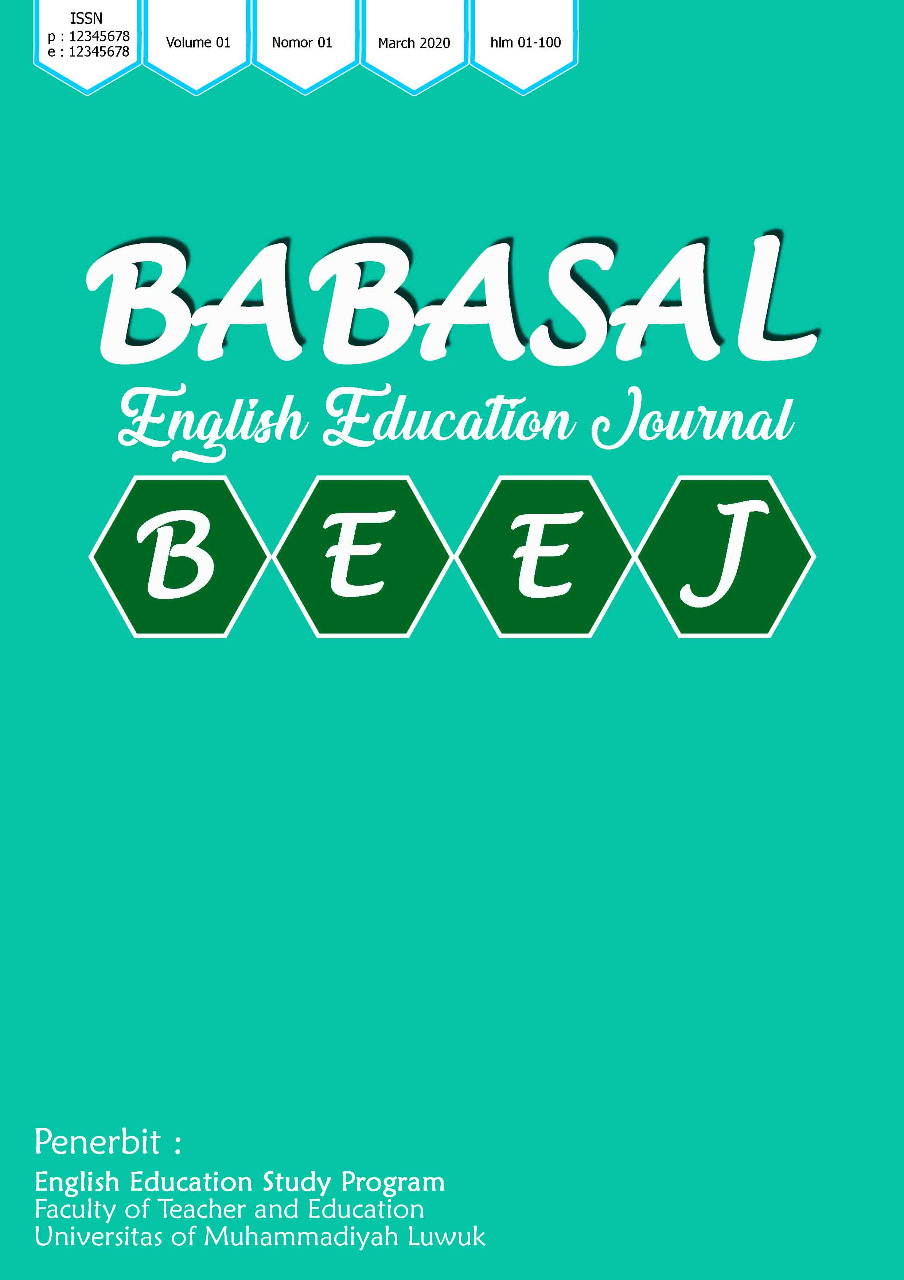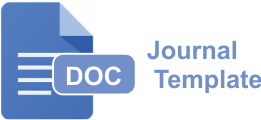The Content Analysis of 7th Grade Teacher Manual Book of “English for Nusantara” in Merdeka Curriculum
DOI:
https://doi.org/10.32529/beej.v5i2.3261Kata Kunci:
Content Analysis, English text-book, English for Nusantara textbook, Teacher Manual, Merdeka CurriculumAbstrak
This study had the purpose to report the analysis results of teacher manual book of “English for Nusantara” for grade VII. The research applied qualitative method with content analysis research design. This study was conducted in even semester of 2022/2023 academic year where the research herself as the instrument of the research. The data were collected from all five chapters in this book together with all three units of each of the chapter. This qualitative research applied conceptual research design. The analysis was carried out by referring to eight aspects junior high school teachers expected to be available in a teacher manual book as found by Fahmi, et.al., (2022) in their research. Those elements covered: layout, teaching procedures, materials explanation, teaching aids, assessment, time allotment, language example and answer key. The analysis results revealed that not all aspects provided in this book, hence, it was less effective to guide teacher in using this manual. However, as the implementation of “Merdeka curriculum’, this manual had already fulfilled what were mandated by the curriculum. This research suggests the authors of the any teacher manual textbook to develop the book based on the teachers’ expectations and needs in order to improve its benefits.
Referensi
Akbarjono, A., Melati, P., Martina, F., & Syafryadin, S. (2021). Content Analysis of Speaking Activities in English Textbook Based on 2013 Curriculum for the First Grade Students At Senior High School. English Review: Journal of English Education, 10(1), 105–112. https://doi.org/10.25134/erjee.v10i1.5360
Akhmad, E., R. Saleh, Y., & Pakaya, S. (2022). Criteria of Good English Textbook for Students: A Senior English Textbook Analysis. ELOQUENCE?: Journal of Foreign Language, 1(3), 114–124. https://doi.org/10.58194/eloquence.v1i3.454
Bahrami, N., Soleimani, A. M., Yaghoobzadeh, A., & Ranjbar, H. (2016). Researcher As an Instrument in Qualitative Research: Challenges and Opportunities. Advances in Nursing & Midwifery, 25(90), 27–37.
Charalambous, A. (2011). The Role and Use of Course Books in EFL. Online Submission, May, 1–12. https://eric.ed.gov/?id=ED524247
Creswell, J.W., & Creswell, J.D. (2018). Research design (5th ed.). SAGE Publication.
Cunningsworth, A. (1995). Choosing Your Course Book. Oxford.
Dwinalida, K. (2023). Teachers' and Students' Perception on an English Coursbook Used in EFL Classroom. 4(1), 1–12.
Fahmi, F., Pratolo, B. W., & Abbas, A. (2022). The core aspects of teacher’s book content: An analysis on teacher’s needs. International Journal of Evaluation and Research in Education, 11(3), 1575–1584. https://doi.org/10.11591/ijere.v11i3.22370
Firharmawan, H. . & R. E. (2019). Analyzing a textbook “Bright anEnglish Course for Junior high school” Published by Erlangga Publishing Company. Journal of English Language Learning (JELL), 4(2), 30–38.
Hidayah, A. A. N., Ayunasti, A. D., Azkia, Z. Z. W., & Ikaningrum, R. E. (2021). Content Analysis of English Textbook: Suitability between Skill Focus and Language Features. Jurnal VARIDIKA, 33(1), 38–53. https://doi.org/10.23917/varidika.v33i1.14922
Jannah, D. M., Islam, R., Lestari, W., Aziz, A., Mengajar, A., & Perubahan, A. (2024). Realizing Merdeka Belajar?: Case Study of Mbkm Teaching Assistance Program At the Family Course. 5(1), 1–7.
Liagustin, K.I. (2023). A content analysis of character education in “English for Nusantara” textbook for seventh grade students. (Undergraduate thesis). Universitas Islam Negeri Maulana Malik Ibrahim.
Marshall, C. & Rossman, G.B. (2016). Designing qualitative research (6th ed.). SAGE Publication.
Mumtaz, I. (2020). A Content Analysis of “When English Rings a Bell”: An English Textbook for Seventh Grade (Ed. 2017). Undergraduate (S1) thesis, IAIN Ponorogo.
Prasetyaningtyas, P. M., Mujiyanto, J., & Sutopo, D. (2022). A Content Analysis of the English Textbook Entitled “Bright an English 2.” English Education Journal, 12(4), 621–628. https://doi.org/10.15294/eej.v12i4.65393
Putri, A., & Muamaroh, M. (2022). An Analysis on Speaking Materials of a Student Textbook. Proceedings of the International Conference of Learning on Advance Education (ICOLAE 2021), 662(Icolae 2021), 951–970. https://doi.org/10.2991/assehr.k.220503.104
Radi?-Bojani?, B., & Topalov, J. (2016). Textbooks in the EFL classroom: Defining, assessing and analyzing. Zbornik Radova Filozofskog Fakulteta u Pristini, 46–4, 137–153. https://doi.org/10.5937/zrffp46-12094
Simanjuntak, T. M., Sinaga, P., Zai, K. D., Chandra, L., Panggabean, E., & Saragih, E. (2021). IDEAS Journal of Language Teaching and Learning, Linguistics and Literature Content Analysis Of Student Book"When English Rings A Bell" For Grade Viii Junior High School. 9(1), 280–349. https://doi.org/10.24256/ideas.v9i1.1786
Sitorus, M. M., Silalahi, L. H., Rajagukguk, H., & Saragih, E. (2021). Content Analysis of When English Rings a Bell Student’S Textbook. Indonesian EFL Journal (IEFLJ), 7(1), 79–88. https://www.journal.uniku.ac.id/index.php/IEFLJ/article/view/3996
Sucipto, S., & Cahyo, S. D. (2019). A Content Analysis of the Reading Activities in “Bright 2”an English Textbook for Junior High School Students. English Language Teaching Educational Journal, 2(1), 13. https://doi.org/10.12928/eltej.v2i1.918
Sugiyanta, & Said, M. (2018). Assessing EFL Textbooks for Indonesian High School Students. Advances in Social Sciences Research Journal, 5(7), 358–373. http://dx.doi.org/10.14738/assrj.57.4940.
Wen-Cheng, W., Chien-Hung, L., & Chung-Chieh, L. (2011). Thinking of the Textbook in the ESL/EFL Classroom. English Language Teaching, 4(2), 91. https://doi.org/10.5539/elt.v4n2p91
Wilson, V. (2011). Research methods: content analysis. Evidence Based Library and Information Practice. Journal of Information Science, 30(3), 227–239. https://doi.org/10.1177/0165551504044668
Unduhan
Diterbitkan
Terbitan
Bagian
Lisensi
Hak Cipta (c) 2024 Fiona Rihandini, Aswir Aswir

Artikel ini berlisensi Creative Commons Attribution-NonCommercial 4.0 International License.



